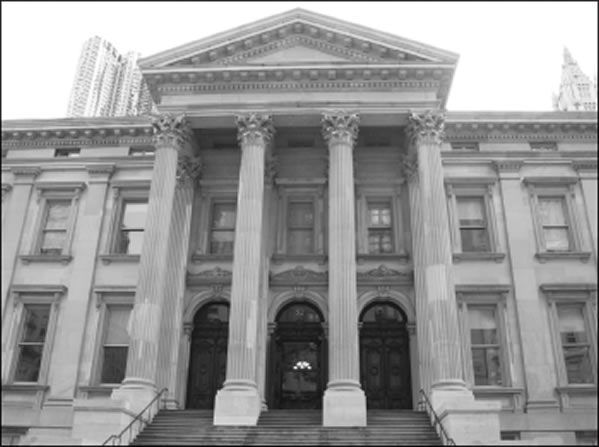BY Aline Reynolds
As if school overcrowding in Lower Manhattan weren’t bad enough, it might get worse in the coming years, an alarming prospect for Downtown parents banking on sending their children to neighborhood schools.
The opening of the 400-seat elementary school Downtown parents were urgently waiting for could be delayed if proposed cuts in the state budget go through, according to the New York City Department of Education.
New York State plans to reduce aid for new school capital projects by 48 percent, forcing the D.O.E. to delay construction of 17,000 new school seats citywide and push back the start construction date of the Downtown school from 2013 to 2014.
In a written statement, N.Y.C. Schools Chancellor Cathie Black said that, if the state matched the city’s six percent cut, rather than diminishing funding by 48 percent, the city D.O.E. could afford to create another 11,000 school seats throughout the city.
“We have seen historic and unprecedented levels of school construction under this administration, with more than 100,000 new seats already created since 2003,” said Black — 13,000 of which were created in Manhattan. “But Albany’s proposed cuts to our school construction efforts will mean more overcrowding, fewer new buildings and deteriorating conditions at our existing buildings.”
“We understand the need to invest wisely during these tough budget times,” Black continued, “but the state’s decision to cut back on school construction aid means that we will not be able to keep up with the projected demand across the city.”
Jack Zarin-Rosenfeld, a spokesperson for the D.O.E., said the Department would not have an estimated completion date for the Downtown elementary school until it selects a building contractor.
A delay in the school’s opening would be “a disaster,” according to Eric Greenleaf, a professor at the New York University Stern School, who has extensively researched the grim outcomes of Downtown school overcrowding.
“If it is delayed,” said Greenleaf, “school overcrowding will be catastrophic, and families and businesses will leave Downtown Manhattan in droves.”
Lower Manhattan public schools will require more than 500 new seats by 2014 to accommodate neighborhood students, according to Greenleaf’s research. These numbers would hold true, he said, even if promised additional space is made available in P.S./I.S. 276 and the Spruce Street School, at its new location in the Beekman Tower at 8 Spruce Street.
Were the 400-seat elementary school to open in 2014, Greenleaf noted – which, according to the D.O.E., is no longer an option — it would be completely packed the day it opened, and a second new neighborhood school would need to open the same year to take in more than 100 surplus students.
“We’re in for severe overcrowding, if the Peck Slip school is the only school they build,” he said.
Education activist Tricia Joyce, a P.S. 234 parent, was equally dismayed by the news. “It’s not an option to delay the school unless [the D.O.E.] wants to answer to the 35 percent of the neighborhood that would leave if they don’t build the school,” she said. “Hurting the generation that’s coming up, that’ll be leading us in the future, makes no sense at all.”
There are so many other areas other than school construction where the D.O.E. could make cutbacks, she said, such as its legal and public relations departments. “We need to move beyond this and find real solutions. This is a non-solution in my view.”
State Assembly Speaker Sheldon Silver, who leads the School Overcrowding Task Force in Lower Manhattan, called on the School Construction Authority to build the 400-seat elementary school “without delay.” His task force spearheaded the effort to secure the U.S. Postal Service site at One Peck Slip for the school.
“Even in difficult economic times,” said Silver, “providing a quality education for our children must remain a top priority. The population Downtown is surging, and we have an immediate need for new classroom seats so that children can attend quality schools in their community.”
Neglecting the demand for more Lower Manhattan school seats is “unacceptable,” according to New York State Senator Daniel Squadron in a March 3 letter to Black.
Squadron said he intends to work with Black to restore state funding, which he deems a “top priority.”
“While I appreciate the severe budget constraints on the S.C.A.,” he said, “failure to met the need for new school seats would worsen a crisis that already affects all of Lower Manhattan; it must not happen.”
Squadron continued, “A construction delay will force already overcrowded schools to absorb even more students, a scenario that is untenable for the families of Lower Manhattan, who have suffered from the consequences of insufficient planning for years.”
Squadron also noted that the S.C.A. was once in a position to build the school
“They had the opportunity to build [the school] when they were flush with cash. Now, they must make good on their promise.”
The D.O.E. Panel for Educational Policy will vote on the Department’s five-year capital plan on March 23. It will then go to the Mayor and City Council for approval. The city’s operating and capital budgets will be finalized by June 30, the exact vote date being subject to negotiations between the two parties, according to a spokesperson for the Mayor’s office.
Currently, the D.O.E. is in exclusive negotiations with the Peck Slip Post Office for acquisition of the two-floor space at One Peck Slip, the proposed site of the elementary school. The deal would close in mid-summer, once the approval process is complete and the contract is signed, according to a spokesperson for the U.S. Postal Service.




























